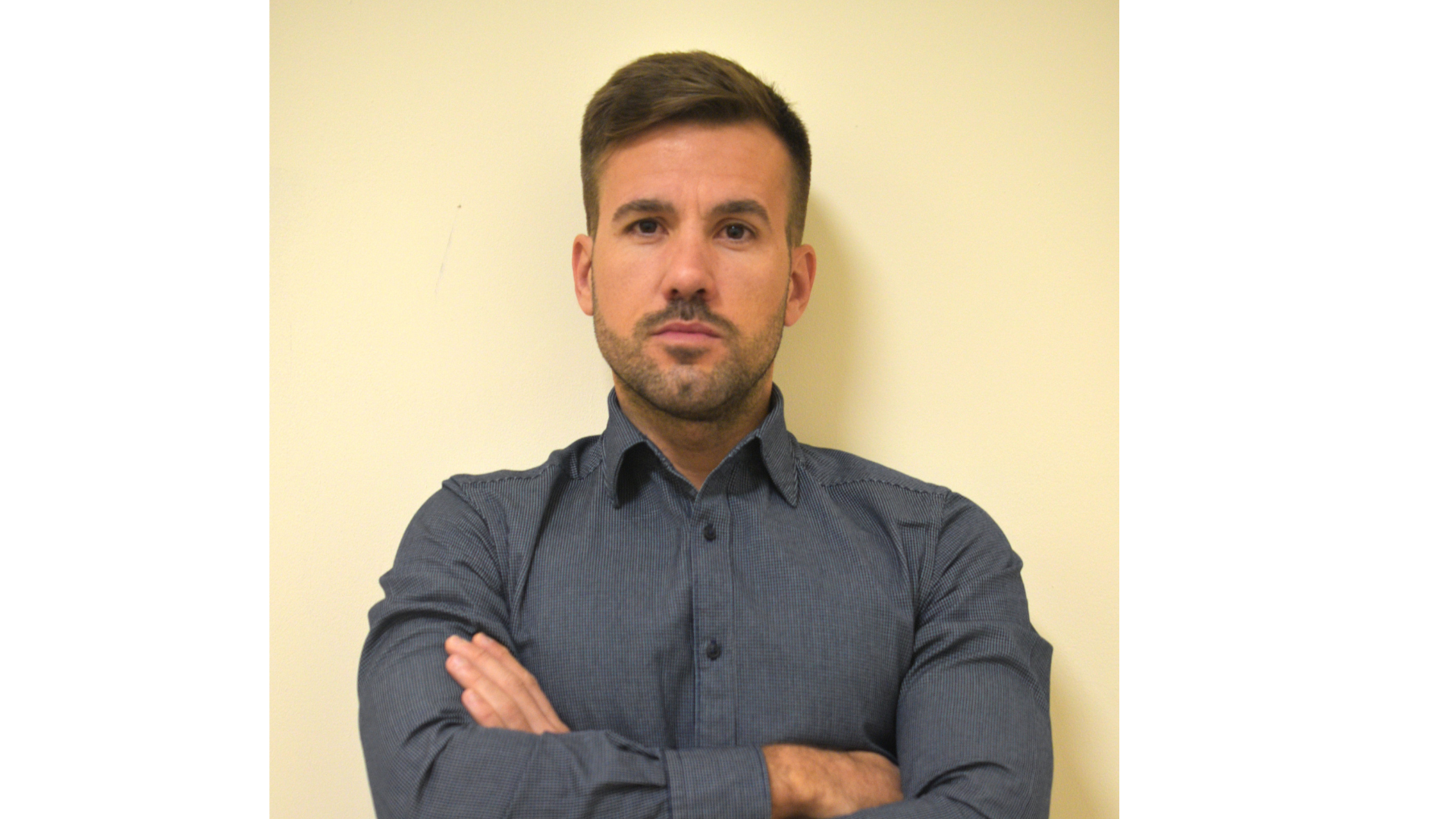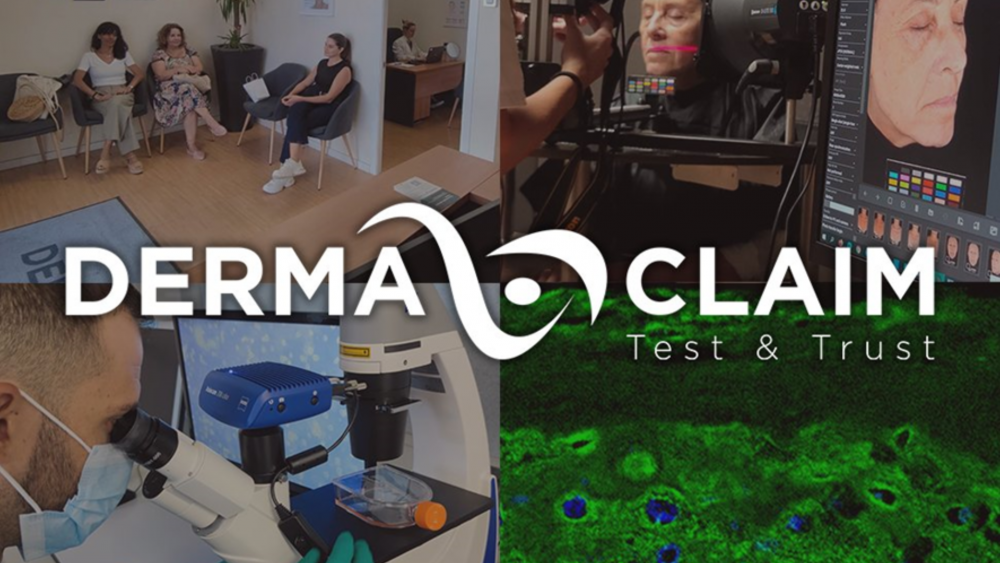Introduction
The use of comparative before and after data in cosmetic product evaluations has long been a mainstay of marketing and consumer decision-making, both at the level of quantitative effects obtained after treatment and at the level of representative images. Images serve as subjective visual testimonials, demonstrating the potential transformative effects of skin care products, while figures and percentages are useful to objectively show the improvement of specific biomarkers evaluated and validate marketing claims regarding the skin condition before and after (B&A). However, controversies surrounding misleading claims and inconsistent representations have raised concerns about the reliability and credibility of such comparisons. To maintain the accuracy and reliability of these results, it is imperative to understand and implement best practices for conducting clinical trials. Besides, establish common criteria between the distinct laboratories of analysis (CRO, by his acronyms in English) to validate the claims corresponding would be useful to ensure that all the parts adhere to the same rules, boosting the transparency and building confidence between the consumers.
Laying the groundwork: best practices in cosmetic clinical trials
A crucial aspect of conducting comparative clinical trials is the establishment of standardised conditions and protocols. Without uniform conditions at different trial sites, data may not be valid, as differences in experimental conditions interfere with the analysis and interpretation of results and conclusions.
Consistency in lighting, background and camera settings is vital to ensure uniformity in images captured before and after product use. The use of a controlled environment minimises variables that could affect the appearance of skin or features. Small differences, such as the use of manual or automatic flashes, open or closed doors in the room, presence or absence of windows, can cause large differences when analysed in detail. In Figure 1, it can be seen how the image before treatment (left) has a higher brightness than the image after treatment (right), suggesting the idea that the treatment is reducing facial brightness, when in fact it is an artefact caused by the difference in lighting conditions. This can only be seen in detail by including an official 'colourchart' in the images, as shown below.
Similarly, encouraging participants to adopt neutral poses and facial expressions helps to accurately compare features in before and after photos. Avoiding exaggerated facial expressions is crucial, as these can misrepresent the true effects of the product. The presence or absence of an additional screen showing the image obtained on the initial visit to compare the new purchase could make a difference. In Figure 1, a neutral and correct facial pose and expression can be observed in the pre-treatment image (left), while in the post-treatment image (right), the volunteer tilts her head slightly downwards and forces a small smile, causing more visible 'marionette wrinkles' compared to the initial state.
The use of high-resolution, unaltered images, together with an official colourchart, ensures that actual skin conditions or changes are accurately represented. Avoiding retouching or filters is crucial, as these can distort or enhance the results beyond reality. In order to provide the best imaging conditions, the use of cross polarised (CP), parallel polarised (PP) and/or half polarised (HP) images could also be interesting to exploit the full potential of skin benefits without human 'manual' interference.
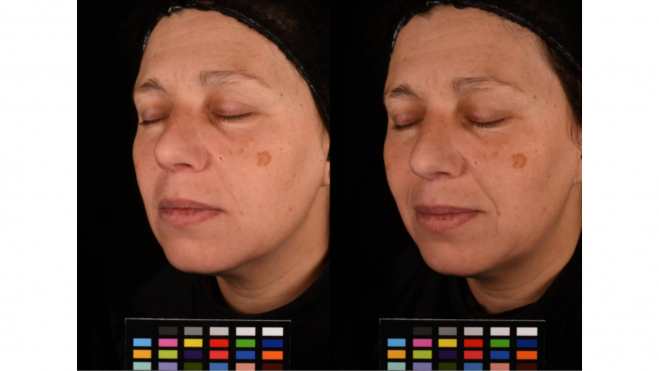
Given all these factors, it is clear to consider that the use of 'casual' before and after images poses several challenges and risks. Casual or inconsistent photography can create misleading perceptions about product efficacy; while variations in lighting, angles or expressions can falsely exaggerate or diminish perceived results. Similarly, lack of transparency regarding image alterations or enhancements can mislead consumers.
In terms of product application, it is essential to establish clear timelines and protocols. Defining a specific timeline for the use of the product between the before and after photos is crucial. The results will be different depending on whether the last application took place 2 hours or 12 hours before the technical measurements. Participants should strictly adhere to the application instructions within this time frame. Documenting the exact procedure, frequency and duration of product application for each participant is also necessary for an accurate assessment. Ensuring participants' compliance with intake controls, diaries or other possible mechanisms is always helpful to improve the reliability of the results.
The use of reliable instrumental technologies also plays a key role in supporting efficacy claims. Innovative and sophisticated equipment provides objective and quantitative measurements, enabling testing laboratories (CROs) to validate the effects of skin care formulations with precision and accuracy. By relying on these enabling technologies, researchers can ensure that their findings are based on empirical data, enhancing the credibility and reliability of their results. For example, wrinkle assessment does not have the same sensitivity and reliability when performed with innovative high-tech 3D equipment as it does when using 2D image analysis or silicone replicas, protocols that have become outdated compared to new technologies.
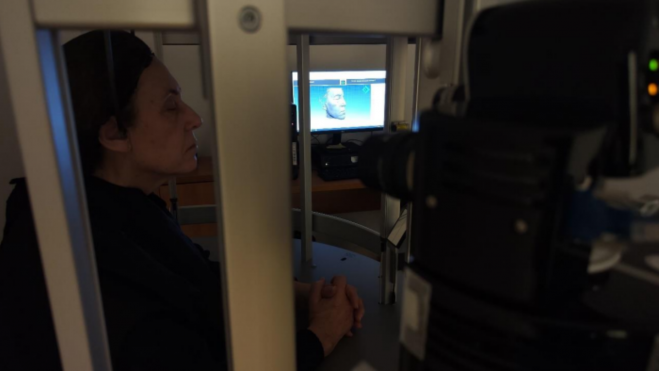
Another very relevant issue, sometimes the most difficult to manage in clinical trials with human volunteers, is the impact of external factors, both at the time of image acquisition and measurements in the clinical facilities, and throughout the study period. Specifically, it is critical that clinical facilities maintain constant temperature and humidity conditions, so that measurement acquisition is not affected by different 'environmental' conditions during different visits. To this end, it is crucial that volunteers adjust to these conditions before proceeding with relevant instrumental measurements or imaging, ensuring uniformity of acquisitions. The development of specific protocols for taking measurements through different technical replicates, especially when working with point acquisition skin probes, so as to reduce variability arising from the acquisition itself by the technician or researcher concerned, should be considered to ensure reproducibility of data.
On the other hand, natural variations in skin conditions must always be considered. For example, it no longer makes sense to perform whitening and depigmenting clinical trials immediately after returning from the summer period, in order to maximise the effects of the application using the natural reduction of melanin synthesis when not exposed to the sun, since the use of innovative technologies for image analysis can analyse homogeneity, uniformity and contrast parameters, which can clearly demonstrate whether changes in skin condition are due to a specific treatment application or to the absence of sun exposure during the treatment period. Specifically, in terms of climatic and environmental conditions, it will never be recommended to conduct clinical anti-ageing or depigmentation trials during the summer, when sun exposure is unavoidable in most regions, such as southern Europe. Other external factors, much more complicated to manage during a clinical trial, could be diet, lifestyle, stressful conditions or concurrent use of other products that may influence the results. Failure to take these external factors into account may incorrectly attribute changes solely to the product tested.
Obtaining explicit informed consent from participants prior to initiating cosmetic clinical trials is crucial for ethical and legal reasons, both for participation and for the use of images. This process ensures that individuals fully understand the nature of the procedures, potential risks and expected benefits associated with cosmetic interventions. Informed consent promotes transparency, enabling participants to make well-informed decisions about their participation in clinical trials. It also underscores the principles of autonomy and respect for individual rights, fostering trust between researchers and participants. By obtaining explicit consent, researchers comply with ethical standards and regulatory requirements, mitigating the possibility of legal problems. Specific consent for the use of images is also critical to avoid potential problems during marketing campaigns. The use of unauthorised or non-consensual images with proper context violates ethical standards and undermines credibility. This commitment to informed consent not only protects the well-being of participants, but also contributes to the credibility and integrity of cosmetic clinical research, ultimately driving the development of safe and effective cosmetic interventions.
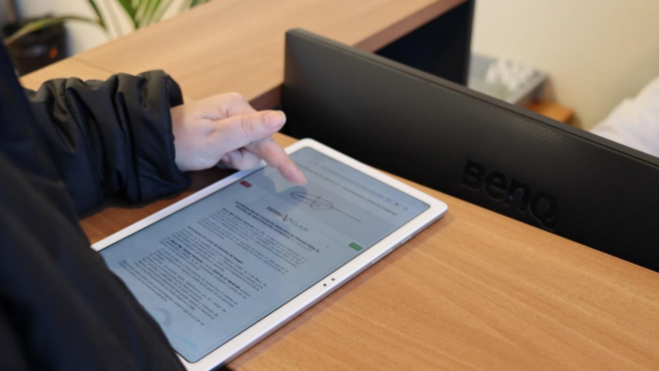
In this sense, it is also important to consider the correct obtaining of the necessary permits and authorisations for the importation of cosmetic products and formulations, when working with products from outside the European Union. Before conducting clinical efficacy studies on human volunteers, products must have obtained positive results in clinical safety studies (Patch Test, HRIPT...) and a Cosmetic Product Safety Report (CPSR) must have been prepared.
Finally, and possibly the most important aspect of a clinical study in human volunteers, is the recruitment of the panel of participants. The likelihood of positive results depends radically on the correct selection of the panel. Errors in setting inclusion or exclusion criteria can result in a potentially positive product having its effect masked, leading to misinterpretations and misleading conclusions. For example, it is highly unlikely to obtain significantly positive effects on increasing hydration values if we select a panel of participants with high baseline hydration values. Similarly, it is not possible to observe positive effects of an anti-wrinkle product if we select participants with no wrinkles in the area of interest. Despite the obviousness of these facts, this is one of the most common errors in the development of clinical studies, especially in the early stages for new laboratories.
In relation to this, establishing a previous washout period where volunteers do not use any other product in the area of interest, with the aim of standardising the baseline state of the volunteers in the best possible way, is another recommended strategy before starting the treatment. To carry out an exhaustive follow-up of each volunteer, to identify those who do not comply with the protocols and who only seek financial compensation, as well as to avoid people with medical problems, who are considering a relevant change in their living conditions (diet, exercise, stress, work, etc...), or people who have undergone relevant aesthetic interventions, which could interfere with the effects of the treatment, are fundamental aspects to take into account in any recruitment process. Similarly, training the panel of volunteers with correct topical application protocols can make the difference between obtaining significant results or not.

